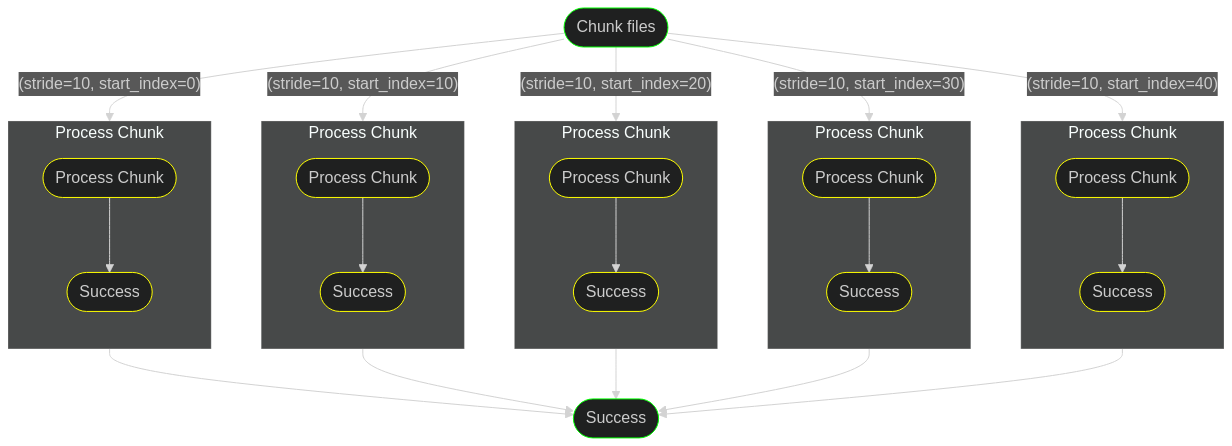Please check here for complete documentation
The below data science flavored code is a well-known iris example from scikit-learn.
"""
Example of Logistic regression using scikit-learn
https://scikit-learn.org/stable/auto_examples/linear_model/plot_iris_logistic.html
"""
import matplotlib.pyplot as plt
import numpy as np
from sklearn import datasets
from sklearn.inspection import DecisionBoundaryDisplay
from sklearn.linear_model import LogisticRegression
def load_data():
# import some data to play with
iris = datasets.load_iris()
X = iris.data[:, :2] # we only take the first two features.
Y = iris.target
return X, Y
def model_fit(X: np.ndarray, Y: np.ndarray, C: float = 1e5):
logreg = LogisticRegression(C=C)
logreg.fit(X, Y)
return logreg
def generate_plots(X: np.ndarray, Y: np.ndarray, logreg: LogisticRegression):
_, ax = plt.subplots(figsize=(4, 3))
DecisionBoundaryDisplay.from_estimator(
logreg,
X,
cmap=plt.cm.Paired,
ax=ax,
response_method="predict",
plot_method="pcolormesh",
shading="auto",
xlabel="Sepal length",
ylabel="Sepal width",
eps=0.5,
)
# Plot also the training points
plt.scatter(X[:, 0], X[:, 1], c=Y, edgecolors="k", cmap=plt.cm.Paired)
plt.xticks(())
plt.yticks(())
plt.savefig("iris_logistic.png")
# TODO: What is the right value?
return 0.6
## Without any orchestration
def main():
X, Y = load_data()
logreg = model_fit(X, Y, C=1.0)
generate_plots(X, Y, logreg)
## With runnable orchestration
def runnable_pipeline():
# The below code can be anywhere
from runnable import Catalog, Pipeline, PythonTask, metric, pickled
# X, Y = load_data()
load_data_task = PythonTask(
function=load_data,
name="load_data",
returns=[pickled("X"), pickled("Y")], # (1)
)
# logreg = model_fit(X, Y, C=1.0)
model_fit_task = PythonTask(
function=model_fit,
name="model_fit",
returns=[pickled("logreg")],
)
# generate_plots(X, Y, logreg)
generate_plots_task = PythonTask(
function=generate_plots,
name="generate_plots",
terminate_with_success=True,
catalog=Catalog(put=["iris_logistic.png"]), # (2)
returns=[metric("score")],
)
pipeline = Pipeline(
steps=[load_data_task, model_fit_task, generate_plots_task],
) # (4)
pipeline.execute()
return pipeline
if __name__ == "__main__":
# main()
runnable_pipeline()- Return two serialized objects X and Y.
- Store the file
iris_logistic.pngfor future reference. - Define the sequence of tasks.
- Define a pipeline with the tasks
The difference between native driver and runnable orchestration:
!!! tip inline end "Notebooks and Shell scripts"
You can execute notebooks and shell scripts too!!
They can be written just as you would want them, *plain old notebooks and scripts*.
- X, Y = load_data()
+load_data_task = PythonTask(
+ function=load_data,
+ name="load_data",
+ returns=[pickled("X"), pickled("Y")], (1)
+ )
-logreg = model_fit(X, Y, C=1.0)
+model_fit_task = PythonTask(
+ function=model_fit,
+ name="model_fit",
+ returns=[pickled("logreg")],
+ )
-generate_plots(X, Y, logreg)
+generate_plots_task = PythonTask(
+ function=generate_plots,
+ name="generate_plots",
+ terminate_with_success=True,
+ catalog=Catalog(put=["iris_logistic.png"]), (2)
+ )
+pipeline = Pipeline(
+ steps=[load_data_task, model_fit_task, generate_plots_task], (3)
-
Domaincode remains completely independent ofdrivercode. - The
driverfunction has an equivalent and intuitive runnable expression - Reproducible by default, runnable stores metadata about code/data/config for every execution.
- The pipeline is
runnablein any environment.
More details about the project and how to use it available here.
The minimum python version that runnable supports is 3.8
pip install runnablePlease look at the installation guide for more information.
A simple linear pipeline with tasks either python functions, notebooks, or shell scripts
Execute branches in parallel
Execute a pipeline over an iterable parameter.
Any nesting of parallel within map and so on.





